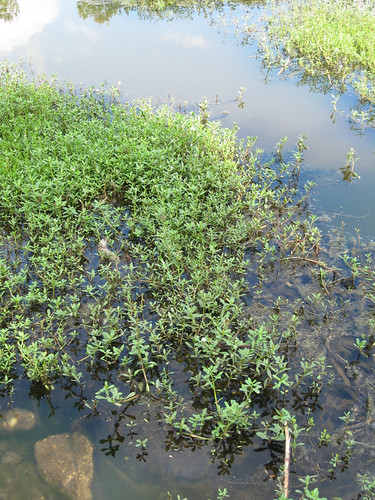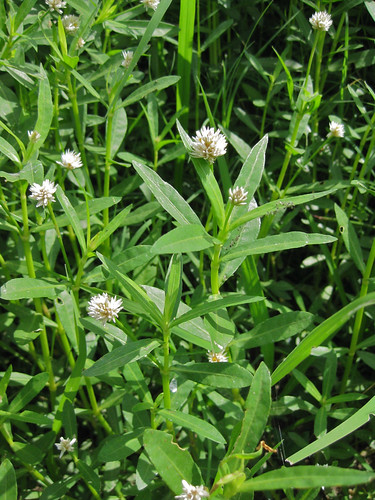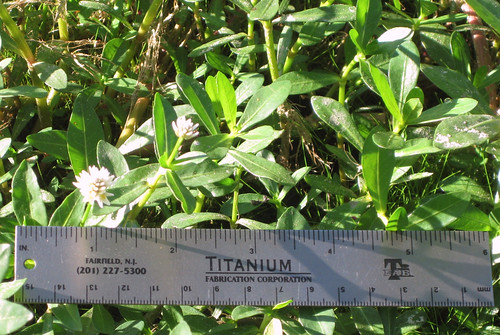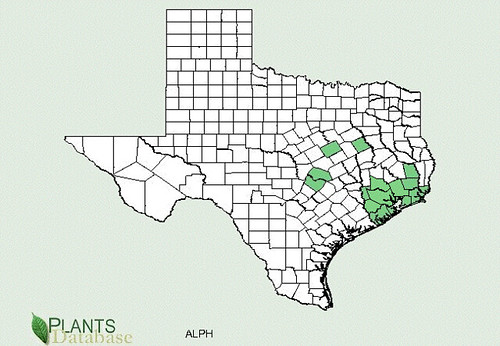Abundance: plentiful
What: stems, leaves
How: cooked
Where: shallow water, full sun
When: spring, summer, fall
Nutritional Value: extremely high in minerals, contains fair amount of protein
Dangers: accumulates toxic minerals if present in the water or soil.
Bed of alligator weeds.

Close-up of alligator weed stems, leaves, and flowers.


Close-up of alligator weed leaves.

Close-up of alligator weed flower.

Texas distribution, attributed to U. S. Department of Agriculture. The marked counties are guidelines only. Plants may appear in other counties, especially if used in landscaping.

North American distribution, attributed to U. S. Department of Agriculture.

Forming thick mats along the shores of shallow water, the invasive, foreign alligator weed has become an all too common sight on Texas shorelines and river banks. The vine-like plants start on shore and creep out to cover the surface of the water.
Cooked alligator weed has a mild, pleasant taste and is a wonderful source of minerals. Treat it like spinach but do not eat it raw. It must be cooked to kill any aquatic parasites. The stems are best chopped up so as to minimize any toughness they might have. The newest growth will be the most tender.
Warning: The water and mud in which it is growing must be free of any harmful minerals or heavy metals as the plant will gather and concentrate these toxic compounds. This accumulating power has been harnessed for bio-remediation of highly contaminated locations.
Buy my book! Outdoor Adventure Guides Foraging covers 70 of North America's tastiest and easy to find wild edibles shown with the same big pictures as here on the Foraging Texas website.

